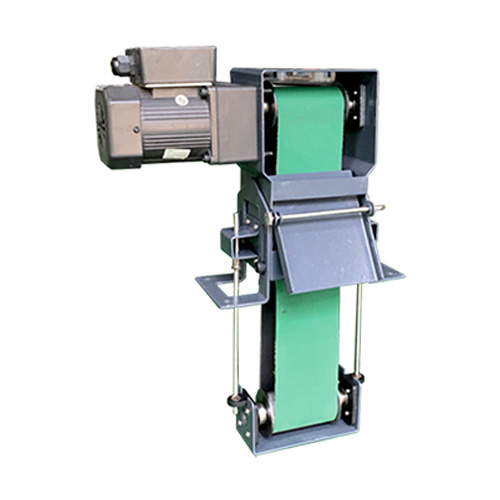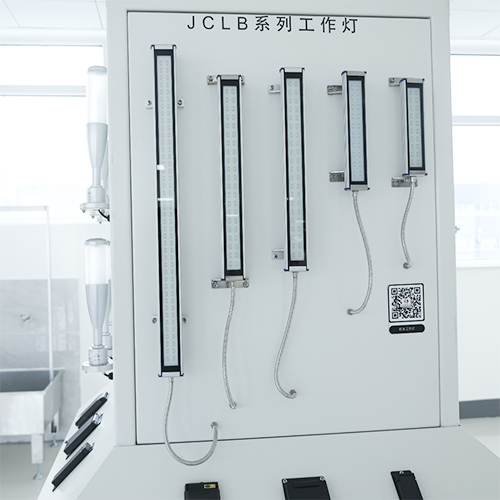-
WhatsAPP: +86 18706448138
-
Tengzhou, Shandong, China

Elevate Machine Shop Security: Your Door Safety Switch Guide
In this guide, we’ll explore how installing a door safety switch enhances your machine shop security, protects personnel, and maximizes uptime.
Table of Contents
Introduction

In today’s highly automated manufacturing world, safety cannot be an afterthought. CNC machines deliver precision and productivity, but they also pose risks if access doors open during operation. A door safety switch is the fundamental safeguard that prevents accidental machine startup or continued motion when a service door is ajar. In this guide, we’ll explore how installing a door safety switch enhances your machine shop security, protects personnel, and maximizes uptime. Shansen, as a leading CNC electrical components developer and manufacturer, has engineered robust door safety switch solutions designed for seamless integration and uncompromising reliability. Whether you’re retrofitting an existing system or specifying new equipment, understanding the ins and outs of door safety switches is critical.
What Is a Door Safety Switch?
A door safety switch is an electromechanical device installed on an access panel or guard door to detect its position—open or closed—and relay that status to the machine’s control system. When the door is closed, the switch completes a safety circuit, allowing the CNC controller to execute normal operations. If the door opens, the switch immediately interrupts power or sends an emergency stop signal, halting motion to prevent injury or damage. Incorporating a door safety switch is not only a best practice; it’s often mandated by industrial safety standards such as ISO 13849 and ANSI B11. Safety designers, electrical engineers, and machine builders rely on these switches to enforce physical barriers around dangerous zones.
Key Components of a Door Safety Switch

A typical door safety switch assembly comprises:
- Actuator: Mounted on the moving door, it engages the switch body when closed.
- Switch Body: Houses the contacts and locking mechanism. It is wired into the machine’s safety circuit.
- Safety Contacts: Force-guided contacts ensure reliable opening under fault conditions.
- Locking Mechanism: Some advanced switches feature mechanical locks to prevent door opening until motion stops.
- Housing & Enclosure: Rated for the shop environment (IP65 or higher).
- Wiring & Connectors: Quick-disconnect plugs and heavy‐duty cable ensure durability.
Shansen’s door safety switch line offers modular actuator heads, multiple contact configurations, and optional lock-and-unlock feedback, allowing you to customize functionality to your CNC cells.
How Does a Door Safety Switch Work?
The operational principle is straightforward: when the guard door is closed, the actuator latches into the switch body, enabling safety contacts and closing the safety relay circuit. The CNC controller monitors this circuit; a closed circuit means “safe to run.” If the door opens, the actuator releases, the contacts open, and the safety relay immediately drops out—triggering an emergency stop. In more sophisticated designs, the door safety switch provides dual-channel feedback and force-guided contacts, delivering redundant safety signals that comply with Performance Level (PL) requirements. Some switches also integrate solenoid locks: they hold the door closed during hazardous motions and only release once the machine reaches a safe state, preventing premature access.
Types of Door Safety Switches
Door safety switches come in several flavors, each tailored for different applications:
- Basic Non-locking Switches: Simple two-channel contacts for low-risk enclosures.
- Locking Safety Switches: Incorporate an electromechanical lock to hold the door during dangerous operations.
- Key-Managed Switches: Require a removable key to unlock, ideal for maintenance interlocks.
- Magnetic Safety Switches: Offer non-contact actuation, resistant to dust and vibration.
- Compact Low-Profile Switches: Designed for tight spaces on small CNC units.
Selecting the right type ensures that both safety and productivity targets are met.
Core Specifications and Features
| Specification | Typical Value / Option | Benefit |
|---|---|---|
| Protection Rating | IP65, IP67 | Dust-tight, water-jet protection |
| Contact Configuration | 2 N.C. + 1 N.O. (safety) | Redundant safety channels |
| Actuation Force | ≤ 30 N | Smooth door closing |
| Forced Guided Contacts | Yes | Safety integrity under fault |
| Operating Temperature | –25 °C to +80 °C | Suitable for varied shop environments |
| Locking Force | Up to 2,000 N | Robust door retention |
| Cable Length | 2 m, 5 m, custom | Flexible installation |
This table focuses on the universal attributes you need to evaluate when comparing switches, rather than specific brands. It highlights the critical parameters that impact performance and compliance.
Benefits of Installing a Door Safety Switch in CNC Machines

Implementing a door safety switch delivers multiple paybacks:
- Enhanced Personnel Protection: Guards against accidental intrusion into moving parts.
- Regulatory Compliance: Meets ISO 13849, IEC 62061, and OSHA requirements.
- Minimized Downtime: Fast resets after door opening prevent prolonged stoppages.
- Reduced Liability: Demonstrates due diligence in safety management.
- Seamless Integration: Modern switches like those from Shansen interface directly with PLCs and CNC drives.
Ultimately, you create a safer work environment, inspire operator confidence, and avoid costly accidents.
Installation and Best Practices
To achieve optimal performance from your door safety switch, follow these guidelines:
- Positioning: Mount the switch and actuator so that the door engages smoothly without misalignment.
- Wiring: Use shielded, twist-pair cables for safety circuits; route away from power lines to avoid EMI.
- Feedback Circuits: Wire redundant channels to separate safety inputs on the CNC controller.
- Lock-out/Tag-out (LOTO): Integrate with facility LOTO procedures—many switches allow padlocking.
- Validation: Perform functional tests after installation: open the door during jogging to confirm immediate stop.
- Documentation: Update safety drawings and machine manuals to reflect switch type, wiring, and interlock logic.
Following these steps ensures that the door safety switch not only functions correctly but also forms part of your comprehensive machine safety strategy.
Maintenance and Troubleshooting
Regular inspection and servicing will keep your door safety switch reliable:
- Visual Inspection: Check actuator alignment, housing integrity, and label legibility.
- Contact Testing: Measure continuity in both closed and open positions; replace if contacts stick or wear.
- Lock Function Check: Engage and release the lock several times; ensure full travel and no hesitation.
- Environmental Cleaning: Remove chips, coolant residue, or dust from switch housing and actuator.
- Circuit Verification: Simulate door opening and watch for proper emergency stop activation in your CNC control panel.
Common Issues & Remedies
- False Trips: Realign actuator; ensure wiring is free of shorts.
- Failure to Open: Replace worn contacts; verify no debris obstructs the mechanism.
- Lock Jam: Lubricate moving parts per manufacturer specs; inspect for mechanical damage.
Safety Standards and Compliance

Your door safety switch must comply with international and regional safety standards:
- ISO 13849-1: Specifies Performance Levels (PL) for safety-related parts of control systems.
- IEC 62061: Addresses functional safety of electrical control systems in machinery.
- ANSI B11.19: U.S. standard for performance criteria for safeguarding.
- OSHA 29 CFR 1910: Mandatory requirements for machine guarding in the United States.
Shansen door safety switches are certified to meet PL d and PL e in appropriate configurations, ensuring you achieve the necessary safety category for your CNC cell.
Conclusion
A robust door safety switch is the cornerstone of any safe CNC environment. By selecting the right model, adhering to installation best practices, and performing regular maintenance, you safeguard your team, comply with regulations, and sustain high productivity. Shansen’s advanced door safety switch portfolio delivers the reliability and integration you need to elevate machine shop security. For tailored solutions, expert guidance, or to place an order, please contact us today.
FAQ
Can I retrofit a door safety switch to my existing CNC machine?
Yes. Most door safety switches are designed for retrofit. You’ll need to evaluate mounting space, wiring provisions, and control-system compatibility.
What is the difference between locking and non-locking switches?
Locking switches prevent door opening while the machine is in a hazardous state, using an electromechanical lock. Non-locking switches simply break the safety circuit without mechanical restraint.
Are magnetic door safety switches less reliable?
Magnetic switches offer non-contact operation, which reduces wear and tear. However, they must be correctly aligned and are best suited for environments with minimal metal debris.


